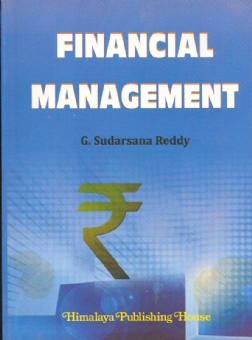Since the days of recorded history, finance has been playing critical role in the lives of individuals, families and organisations. Organisations got wound up, families broke up and individuals were bankrupted if they failed to manage their finances effectively. It was all roses if funds were managed wisely and effectively.
Grandma and grandfather managed finances easily. They hoarded the cash that came in and were generally frugal in spending. They were not required to open accounts, sign cheques and documents, and own plastic cards. Same was the status with organisations too. People who managed cash did not probably need lessons on management of finance.
It is a different scenario today. Management of finances of individuals and of business organisations has become too complex and challenging. One should understand and implement set principles and practices of managing finance.
Financial Management has been written keeping in mind the challenges of managing finances in different contexts. The text essentially revolves around three fundamental issues of managing finance: raising funds, investing them judiciously and dispersal of profits, including dividends to shareholders.
Besides being comprehensive on the coverage of the subject, Financial Management has the following unique pedagogic aids:
– Each chapter begins with learning objectives.
– Numerous problems with solutions appended to each chapter.
– Self-taught tools comprising fill-in-the-blank statements and true/false statements with answers at the end of each chapter.
– Skill-building exercises which help students develop skill in the subject by bridging the gap between theory and practice.
The book is free from jargons and verbose. It is written in simple conventional style. Though the book is aimed at meeting the requirements of Osmania University, II Semester MBA students, general readers too will find the book interesting and rewarding.
UNIT I: THE FINANCE FUNCTION
1. An Overview of Financial Management
2. Time Value of Money
UNIT II: THE INVESTMENT DECISION
3. Techniques of Capital Budgeting
4. Risk Analysis in Capital Budgeting
UNIT III: THE FINANCING DECISION
5. Sources of Long-term Finance
6. Capital Structure (Including Leverages)
7. Capital Structure and Firm Value
8. Cost of Capital
UNIT IV: CURRENT ASSETS MANAGEMENT AND DIVIDEND DECISION
9. Working Capital Management
10. Cash Management
11. Receivables Management
12. Inventory Management
13. Working Capital Finance
14. Dividend Policy
15. Dividend Policy and Firm Value
UNIT V: CORPORATE RESTRUCTURING AND CORPORATE GOVERNANCE
16. Corporate Mergers, Acquisitions and Takeovers
17. Corporate Value Based Management Systems
18. Corporate Governance
Appendix (Tables)
Glossary







